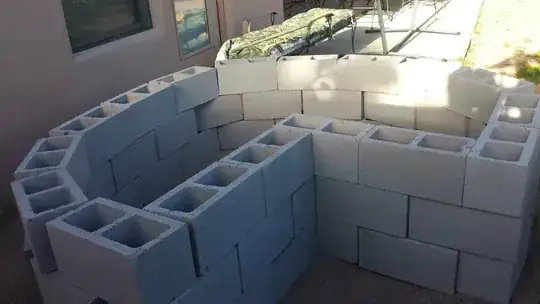I bought some concrete blocks and laid them out like this. The aim is to build a keyhole garden.
 Now I'm concerned that some could fall over. I've got a very curious German Shepherd who could hurt herself if she knocked one of these blocks over. How can I reinforce the blocks? Would filling the holes with sand or gravel be good enough? What about rebar and sand/gravel? I'd rather not use something permanent like cement.
Now I'm concerned that some could fall over. I've got a very curious German Shepherd who could hurt herself if she knocked one of these blocks over. How can I reinforce the blocks? Would filling the holes with sand or gravel be good enough? What about rebar and sand/gravel? I'd rather not use something permanent like cement.
Yes, I will need to build a fence to keep the dog out but I want to reinforce the structure anyway.
I suppose I could remove the top layer of blocks. Would the structure then be stable enough?
I did see this question but it doesn't quite address my situation.